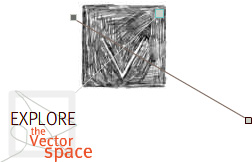Objects of Media Studies
Design by Raegan Kelly
Editor's Introduction
From my Elvis-O-poly board game to my Dukes of Hazzard TV dinner tray to a R.E.M. 45 I can no longer play, my office and home overflow with various artifacts of popular media culture. We might see these things simply as the detritus of the relentless commercialism of the culture industries, ephemeral stuff now rescued from obscurity through various expeditions to thrift stores and E-bay, but Amelie Hastie and her collaborators here invite us to understand these objects differently. Both in their materiality and in the affective chains of pleasure and desire that they do (or do not) activate, such objects point the way to new directions for media studies. In her evocative exploration of a seventy-year-old powder box, one of eight object 'biographies' in Objects of Media Studies, Mary Desjardins sketches new interpretative paradigms for the stuff of culture. Following her insights, my board game, taken seriously, just might "help us capture and understand the dream factory's relation to the self in modernity." However, OMS does not restrict its analyses of the objects of media studies to the souvenir or the collectible. Instead, across its many screens and avenues of reading, OMS surveys a diverse array of 'media objects,' some perhaps expected, others quite surprising.
What is at stake in such investigations? While the scholars brought together here all respect their objects in their very materiality, they also push against a recent turn in media studies toward a certain neo-formalism. Convergent with an explosion of work on new media, a heightened concern with media specificity has often functioned to sever media texts from their contexts. Objects of Media Studies moves us from media specificity to object specificity, but this attention to the object resists any easy formalism or a new instance of fetishization. This is a specificity of the object that is at once precise and profoundly relational, sketching circuits of exchange both between the various objects surveyed and between each object and its larger contextual frames. These frames are personal, political, ideological, cross-cultural, economic, and historical. They help us understand, as one section title claims, that matter matters.
This relationality is emphasized by many of the individual authors (for example, when Lisa Parks directs our attention to the seemingly ephemeral networks emanating from antenna trees.) But it is also a function of the very form of the project. Like all Vectors' projects, OMS is an experiment in the relation of form to content and, as such, it demands new modes of reading. Faced with its quilted array of screens, the temptation might be to click, click, click. But this project needs more than your glance and your touch pad (although you should also certainly engage the tactility of the piece). It invites you to look and to navigate but also to read, asking for and, indeed, requiring your attention. This reading can unfold along several axes: vertically (to follow a single object); horizontally (to navigate Hastie's piecing together of the individual object narratives); thematically; or, more promiscuously, in zig-zagged paths of your own construction. What is gained by these various paths of reading and seeing? The very experience of relationality, of eight objects hovering in space and time, all shot through with desire, affect, collaboration, politics, and tension.



